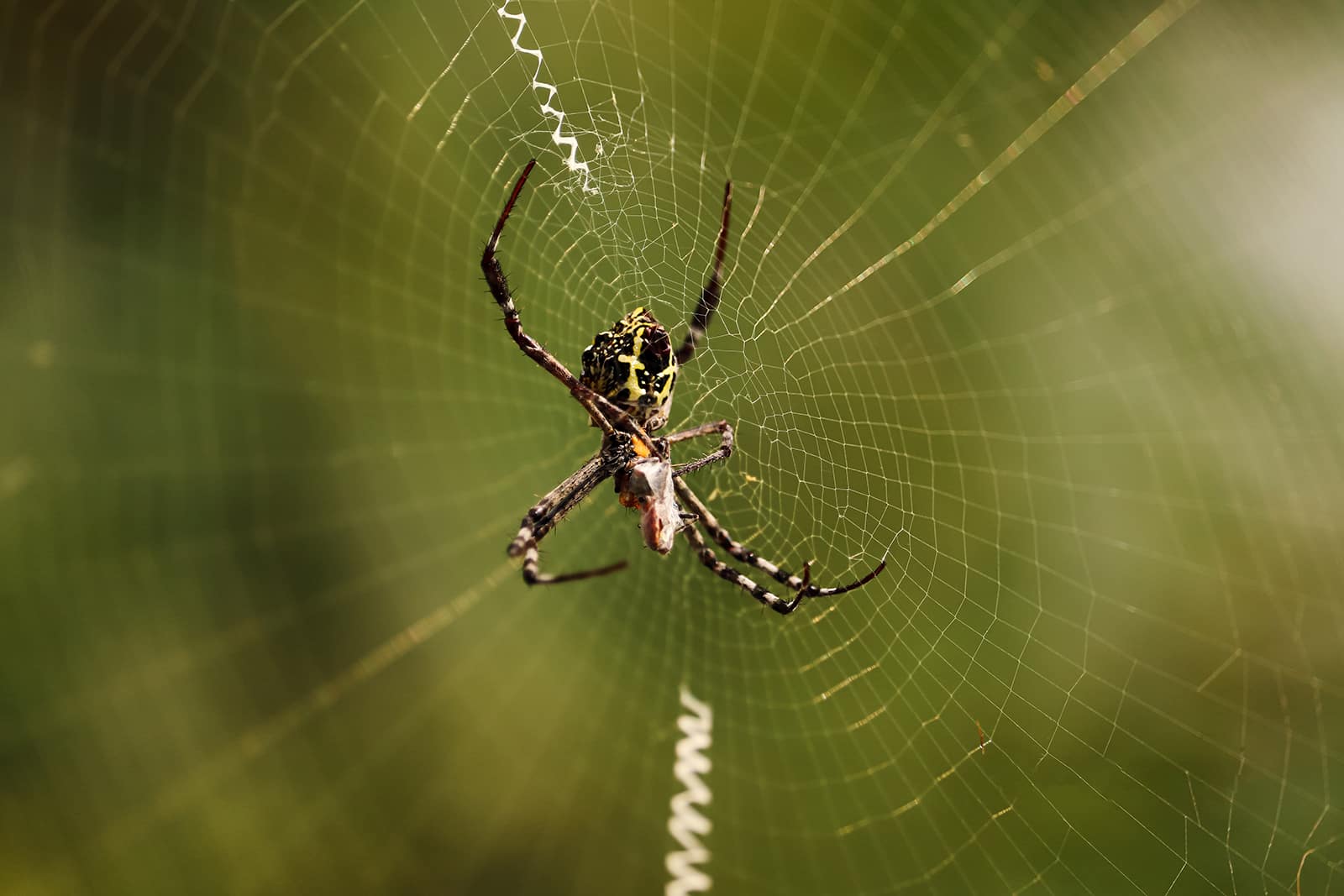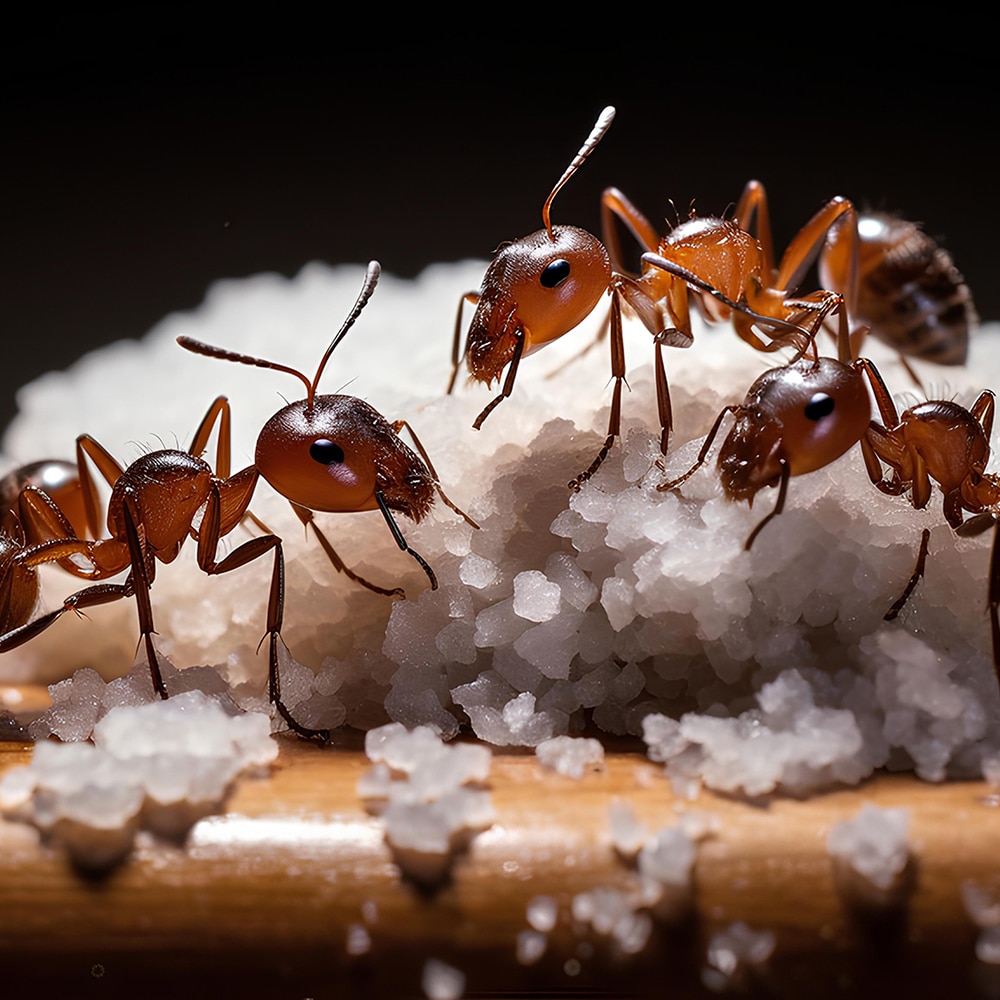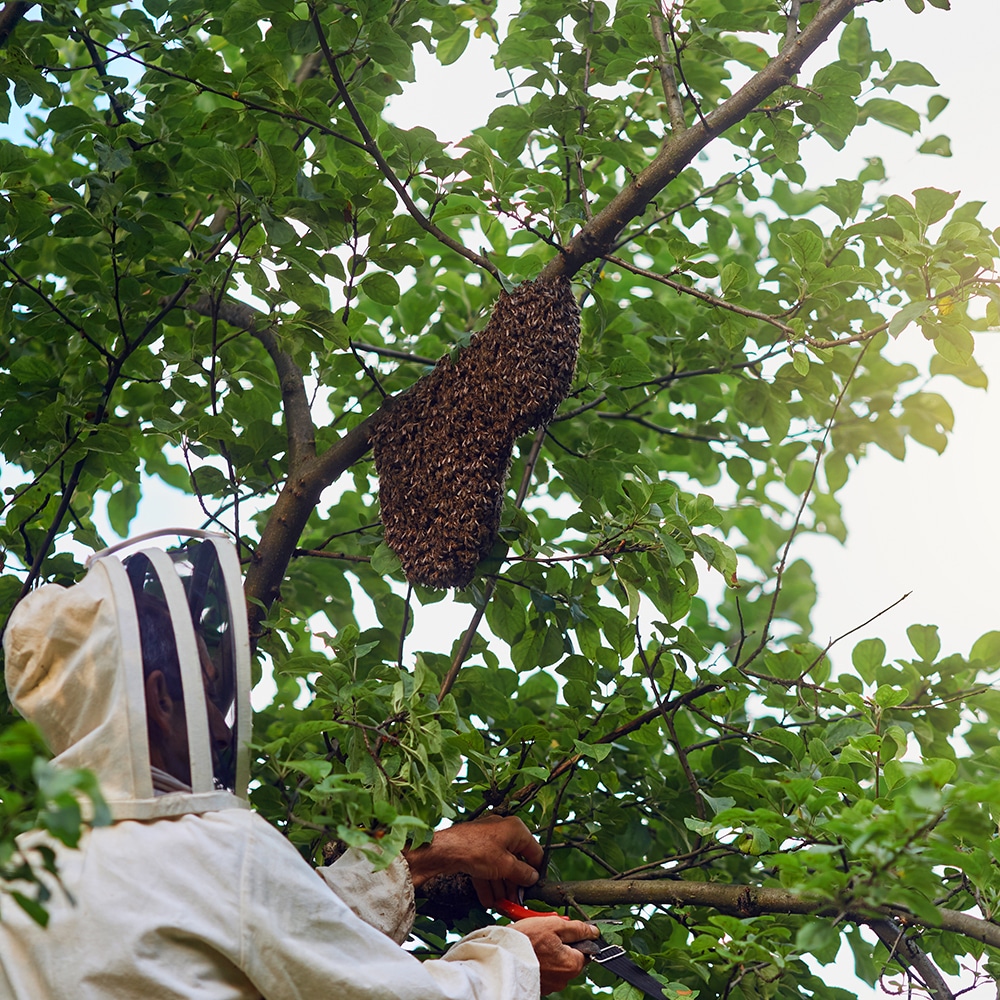
Why Do Spiders Come Back And Why
Why Do Spiders Come Back And Why On The Central Coast NSW. Responsive Proactive Solutions. Detail-focused for lasting results. Call Adam on 0431 222 894
Dealing with ants in your home can be frustrating. Learn how to get rid of ants in your home efficiently with these practical tips. For expert help on the Central Coast NSW, visit Vital Pest Control.
Why are ants invading your home?
Ants enter homes in search of food, water, and shelter. They are attracted to crumbs, spills, and pet food. Even small gaps or cracks can invite them inside. These pests thrive in warm, humid environments like kitchens and bathrooms.
Common ant species in Australia
Australia hosts a variety of ant species. The most common include the coastal brown ant, black house ant, and green tree ant. Each species has unique behaviours and nesting preferences, affecting how you tackle infestations.
How to identify an ant infestation
Look for trails along walls or floors. Ants usually follow scent trails left by others. You might also find them near food sources or moisture. Spotting ants regularly inside is a sign of infestation.
How ants enter your house
Ants often exploit tiny entry points. They enter through gaps around windows, doors, and utility lines. Repairing these can help prevent invasions. Keeping a tidy home reduces potential attractions.
Are store-bought ant sprays effective?
Store-bought sprays offer temporary relief but are not always effective long-term. They rarely reach nests, so ants often return. Consider these as part of a broader pest control strategy.
Best DIY ant control solutions
1. Seal entry points to block access.
2. Keep counters clean and food sealed.
3. Use vinegar or soapy water to erase scent trails. These steps ensure a reliable and trustworthy approach to pest control.
How to use ant baits properly
Place ant baits near trails or entry points. Allow time for ants to carry bait back to nests. This method targets the colony, providing a fast and responsive solution.
Natural remedies for ant control
Use essential oils like peppermint or tea tree to deter ants. Diatomaceous earth can also help. These natural solutions focus on quality over quantity, achieving effective ant control.
Discover how we can help you today! Reach out to us at Contact.

Ants can become unwelcome guests in any household, especially in Central Coast NSW. Understanding why ants invade your home is crucial for effective pest control. These tiny creatures search for food and shelter, making your home an attractive target. By learning the reasons behind their invasion, you can take steps to prevent them from entering your space.
Food Sources
Ants are primarily driven by the need to find food. Crumbs, spills, and even pet food can attract these persistent pests. They have a keen sense of smell and can detect food from afar. Once they find a food source, they leave a pheromone trail, inviting more ants to join the feast. Regular cleaning and storing food in airtight containers can help deter them.
Weather Changes
Ants often invade homes during extreme weather conditions. In Central Coast NSW, rainy seasons or high heat can drive ants indoors in search of more hospitable environments. They seek moisture and warmth, which your home provides. Sealing entry points and maintaining a dry environment can reduce their visits.
Structural Access
Cracks in walls, gaps in windows, and open doors offer ants easy access. These entry points often go unnoticed, making your home vulnerable. Inspecting and sealing these areas can prevent ants from making themselves at home. Regular checks can keep your space ant-free and more secure.
Ants are a common sight across Australia, particularly in the warm and humid environment of the Central Coast, NSW. Understanding the different ant species can help in effectively managing infestations. Here’s a look at some common ant species you might encounter in this region.
Black House Ants
Black house ants are tiny, shiny black creatures often seen trailing in search of sweet food sources. They are particularly persistent in homes, taking advantage of any crumbs or spills. Though they do not pose significant health risks, their presence can be quite a nuisance, especially in kitchens.
Coastal Brown Ants
Coastal brown ants, also known as big-headed ants, are prevalent on the Central Coast. Recognised by their larger heads, these ants often invade homes in search of protein and grease. They can cause structural damage if they nest in walls or foundations.
Green Tree Ants
Green tree ants, with their vibrant green bodies, are primarily found outdoors. They build nests in trees and shrubs, but occasionally venture indoors. While they play a beneficial role in the ecosystem by controlling other pests, their bites can be painful if they feel threatened.
Understanding these ant species can aid in developing targeted pest control strategies, ensuring a safe and comfortable home environment.
Ant infestations can be a nuisance for any home on the Central Coast of NSW. Knowing how to spot the signs early can save you from a full-blown invasion. Vital Pest Control offers some key indicators to help you identify an ant problem before it spirals out of control.
Visible Ant Trails
One of the most obvious signs of an ant infestation is visible ant trails. Ants often travel in lines from their nest to a food source. You might notice these trails along walls, countertops, or floors. Observing these pathways during early morning or late afternoon can provide clues about the severity of the infestation.
Ant Nests
Finding an ant nest is another tell-tale sign. Ant nests often appear as small piles of dirt or sand, either inside your home or around your garden. These nests serve as the colony’s hub. Spotting one can indicate the presence of a thriving ant community nearby.
Discarded Wings
During certain times of the year, you might find discarded wings near windowsills or entry points. These wings belong to swarmers, ants that leave the nest to form new colonies. Their presence suggests a mature colony is nearby, making it crucial to act swiftly.
Ants are common invaders in homes, often seeking food, water, and shelter. Understanding how they enter your house is crucial for effective pest control. On the Central Coast of NSW, ants can become a persistent problem if not dealt with promptly.
Cracks and Gaps
Ants exploit even the tiniest cracks in walls, foundations, and doors. They can squeeze through minuscule gaps around windows or any poorly sealed entry point. Regular inspections can help identify potential entryways, allowing you to seal them before ants march in.
Open Doors and Windows
Leaving doors and windows open is an open invitation for ants. Without screens, these access points become the easiest way for ants to enter. Installing proper screens and ensuring doors and windows are closed when not in use can deter ants from entering.
Utility Lines and Pipes
Ants often use utility lines and plumbing as highways into your home. They follow these paths from outside, gaining entry through holes or gaps around these installations. Sealing these areas with appropriate materials can block their access.
Plants and Vegetation
Plants near your house can act as bridges for ants. Branches touching walls or roofs provide a direct path inside. Keeping vegetation trimmed and ensuring no direct contact with the building can minimise their chances of entry.
When ants invade your home, reaching for a store-bought ant spray might seem like the quickest solution. But are these sprays truly effective for long-term ant control? Understanding how these products work and their limitations can help you make an informed decision.
How Ant Sprays Work
Store-bought ant sprays typically contain active ingredients designed to kill ants on contact. They often work by disrupting the nervous system of ants. While they can be effective in eliminating visible ants, they may not address the root of the problem. Ant sprays can be a quick fix but often fail to reach the colony, where the queen and most ants reside.
Limitations of Store-Bought Sprays
The main limitation of ant sprays is their inability to eliminate the entire colony. Sprays can scatter ants, causing them to establish new colonies elsewhere in your home. Furthermore, some sprays leave a chemical residue, which can be harmful to pets and children. Over time, ants may become resistant to certain chemicals, reducing the effectiveness of these sprays.
When to Consider Professional Help
If you find that store-bought ant sprays are not effective, it might be time to consult experts like Vital Pest Control on the Central Coast NSW. Professionals use targeted methods that address the entire colony, ensuring a more comprehensive solution to your ant problem. This approach can save time and prevent recurring infestations.
Dealing with pesky ants can be a real nuisance, especially in the warm climate of the Central Coast NSW. Finding effective DIY ant control solutions is essential for keeping your home pest-free. Here’s how you can tackle those tiny invaders with some simple home remedies.
Vinegar and Water Solution
Mix equal parts vinegar and water in a spray bottle to create a powerful deterrent for ants. Spray this solution on ant trails and entry points around your home. The strong scent of vinegar disrupts their scent trails, making it difficult for them to find their way back. Regular application ensures ants stay away while keeping your home smelling fresh.
Borax and Sugar Bait
Create an effective ant bait by mixing borax with sugar. Dissolve this mixture in water and soak cotton balls in the solution. Place these cotton balls near ant trails. The sugar attracts ants, while the borax acts as a natural pesticide. Over time, ants will carry borax back to their colony, eradicating the problem at its source.
Essential Oils for Repelling
Essential oils like peppermint, tea tree, and lemon are excellent natural repellents. Mix a few drops of your chosen oil with water and spray around windows, doors, and other entry points. The strong aroma of these oils confuses ants and prevents them from entering your home. Regular use keeps your space not only ant-free but also pleasantly scented.
Ant infestations can turn your home into an unwanted playground. The good news is, using ant baits correctly is an effective solution. This method targets the entire colony, not just the ants you see. Proper use of ant baits can help you regain control and keep your Central Coast home ant-free.
Choose the Right Bait
Different ant species have varied preferences. Some are drawn to sugary substances, while others prefer proteins. It’s crucial to identify the type of ant in your home. Once identified, use a bait that matches their feeding habits. This ensures the ants take the bait back to their colony, effectively eliminating it.
Strategic Placement
Place the bait in areas where ants are most active. Common spots include along ant trails, near entry points, or in hidden corners. Ensure the bait is easily accessible but out of reach of pets and children. Proper placement maximises the bait’s effectiveness, increasing the chances of eliminating the colony.
Patience is Key
Ant baits take time to work. After placement, avoid disturbing the area. This allows ants to transport the bait back to their nest. You might see more ants initially, a sign they are taking the bait. Resist the urge to spray insecticide, as it can disrupt the baiting process.
Dealing with ants in the home can be a frustrating experience, especially when you’re trying to keep your living space clean and welcoming. Many homeowners on the Central Coast of NSW are turning to natural remedies for ant control, which are often safe for families and pets. These eco-friendly solutions can help manage ant infestations without resorting to harsh chemicals.
Vinegar and Water Solution
One of the most effective natural remedies is a mixture of vinegar and water. Ants rely on scent trails to navigate, and vinegar effectively disrupts these trails. By mixing equal parts of vinegar and water in a spray bottle, you can target areas where ants frequently appear. Spraying this solution along windowsills, doorways, and other entry points can deter ants from entering.
Essential Oils
Essential oils such as peppermint and tea tree are also popular for ant control. Their strong scents can act as a natural repellent. To utilise this method, add a few drops of your chosen oil to a cotton ball and place it near ant entry points. Alternatively, mix several drops with water in a spray bottle for broader application. These oils not only help with ant control but also leave your home smelling fresh.
Food-Grade Diatomaceous Earth
Another effective natural remedy is food-grade diatomaceous earth. This powder is safe for humans and pets but lethal to ants. When ants come into contact with it, the powder damages their exoskeletons, leading to dehydration. Sprinkle it lightly in areas where ants are spotted, ensuring it remains dry for maximum effectiveness.
Ants are persistent little creatures that seem to return even after you think you’ve gotten rid of them. Understanding why they keep coming back is crucial for effective pest control. On the Central Coast, NSW, where warm weather is common, ants can be a year-round problem.
Food Sources
Ants are always on the hunt for food. Even the smallest crumb can attract them. They have a strong sense of smell, allowing them to detect food from meters away. Once they find a source, they leave a chemical trail for others to follow. Keeping your kitchen clean and storing food in airtight containers can help deter these scavengers.
Water Supply
Just like humans, ants need water to survive. Leaky taps, pet water bowls, or damp areas in your home can provide the moisture ants seek. Fixing leaks and reducing moisture can make your home less inviting to these insects.
Nesting Sites
Ants often establish nests inside walls, under floors, or in gardens. Once settled, they are hard to remove without professional help. Regular maintenance and inspection can prevent them from finding a suitable nesting site in the first place.
Weather Conditions
Extreme weather can drive ants indoors as they seek shelter from rain or heat. Ensuring that your home is well-sealed and that entry points are blocked can prevent them from gaining access.
Ants nesting in walls can be a persistent problem for homeowners on the Central Coast of NSW. These tiny invaders find their way through cracks and crevices, making them challenging to eliminate. Effective ant control requires a strategic approach to ensure long-term success.
Identify the Ant Species
Before tackling the problem, it’s crucial to identify the type of ants you’re dealing with. Different species require different treatment methods. For instance, carpenter ants can cause structural damage, while sugar ants are more of a nuisance. Identifying the species helps tailor the right eradication strategy.
Locate the Nest
Finding the nest is essential to eliminate ants effectively. Ants in walls often leave trails that lead back to their nest. Follow their path and listen for a rustling sound within the wall. This can pinpoint the colony’s location, allowing you to target your efforts more efficiently.
Apply Targeted Treatments
Once the nest is located, use targeted treatments like bait traps or insecticidal dust. Bait traps attract ants, who then carry the poison back to the nest, affecting the entire colony. Insecticidal dust is ideal for wall cavities, as it can penetrate deep into the nest, killing ants upon contact.
Seal Entry Points
Prevent future infestations by sealing entry points around your home. Use caulking to close gaps and cracks in walls, windows, and doors. This not only keeps ants out but also helps maintain the integrity of your home’s structure.
Implementing these strategies can significantly reduce ant infestations in your walls, ensuring a pest-free home environment on the Central Coast.
Ants in the kitchen can be a real nuisance, especially on the Central Coast NSW where the climate invites these tiny invaders. To keep your kitchen ant-free, it’s important to understand how to deter them effectively. With some practical steps, you can ensure your kitchen remains a no-entry zone for ants.
Seal Entry Points
Begin by inspecting your kitchen for potential entry points. Ants can slip through the tiniest of cracks, so focus on sealing gaps around windows, doors, and plumbing. Use caulk or weather stripping to close these gaps. This preventative measure is crucial in stopping ants from gaining access to your kitchen.
Maintain Cleanliness
Keeping your kitchen spotless is a key strategy in deterring ants. Wipe down surfaces regularly to remove food residues. Store food in airtight containers and promptly clean up spills and crumbs. Ants are attracted to food sources, so denying them access can significantly reduce their presence.
Use Natural Deterrents
Natural deterrents like vinegar and essential oils can be effective in repelling ants. Spray a solution of vinegar and water around entry points and countertops. Additionally, peppermint or citrus oils can act as a natural barrier. These scents confuse ants and deter them from entering your kitchen.
Ant invasions can be a significant nuisance for businesses on the Central Coast in NSW. Effective commercial ant control treatments are essential for maintaining a pest-free environment. Vital Pest Control offers solutions tailored to various industries, ensuring minimal disruption while eliminating ant colonies.
Professional Inspection
Before implementing any ant control treatment, a thorough inspection is crucial. Professionals at Vital Pest Control will assess the premises to identify the species and locate their entry points. This step is vital for choosing the most effective treatment method, ensuring long-term success.
Targeted Baiting Systems
Baiting systems are a popular choice for commercial spaces. These systems use targeted bait to attract ants, which carry the poison back to their colony. This method not only removes visible ants but also eradicates the entire colony, providing a comprehensive solution.
Barrier Treatments
Creating a protective barrier around your business can prevent ants from entering. Vital Pest Control uses eco-friendly, non-repellent insecticides that ants unknowingly transfer to their colony. This barrier approach is ideal for maintaining a pest-free business environment without harming the surroundings.
Regular Maintenance and Monitoring
Ongoing maintenance and monitoring ensure lasting results. Scheduled inspections help detect any new activity early, allowing for prompt action. This proactive approach ensures your business remains ant-free, safeguarding your reputation and operations from disruption.
Discovering ants in your home can be frustrating, and naturally, you’ll want to know how long it takes to eliminate them. The time required depends on several factors, including the extent of the infestation, the ant species involved, and the methods used for extermination. Understanding these aspects will help you set realistic expectations and choose the most effective pest control solutions.
Size and Location of the Infestation
The size and location of the ant infestation significantly impact the time it takes to get rid of ants. Smaller infestations might be resolved within a few days using bait traps or natural deterrents. Larger infestations, particularly those with hidden nests, might require professional intervention, extending the extermination process to a couple of weeks.
Species of Ants
Different ant species respond differently to treatment. For instance, common house ants might be easier to manage with basic traps, whereas more resilient species like carpenter ants or fire ants need specialised treatments. Identifying the species quickly can speed up the eradication process.
Methods of Extermination
The approach you choose also affects the duration. Using natural methods or DIY solutions might take longer, while professional pest control services can often provide quicker results. Experts use targeted techniques and products that address the root of the problem, ensuring a more efficient resolution.
In conclusion, while some ant issues can be resolved promptly, others might require a more extended effort. Partnering with a trusted pest control service like Vital Pest Control on the Central Coast NSW can ensure a thorough and timely solution to any ant problem.
Ants are a common sight during rainy periods, and you might wonder why they suddenly invade your home. This phenomenon is linked to their survival instincts and environmental changes. Understanding these factors can help you manage and prevent an ant infestation effectively.
Seeking Shelter From Wet Conditions
Rain saturates the soil, forcing ants to leave their underground nests to avoid drowning. They seek dry, safe places, often finding refuge in homes. Your home provides ideal shelter, with its warmth and protection from rain, making it an attractive option for ants.
Food Sources Become Limited
Rain washes away food sources outside, prompting ants to search for sustenance indoors. Kitchens, pantries, and even pet food bowls offer a bounty of food that attracts ants. They follow scent trails left by scout ants, leading entire colonies to these new food sources.
Increased Activity and Reproduction
Moisture from rain boosts ant activity and reproduction. The damp environment encourages ant colonies to become more active, with queens laying more eggs. As colonies grow, so does the need for additional food and shelter, driving ants to explore new territories, such as your home.
Addressing these factors can help reduce ant invasions. Regularly sealing entry points and maintaining clean environments can deter these persistent pests from making your home their new haven.
Ant infestations can be a real headache, especially when they invade your home. On the Central Coast NSW, Vital Pest Control offers professional methods to tackle this issue effectively. Understanding these techniques can help you make an informed decision and rid your home of unwanted pests.
Comprehensive Inspection
The first step Vital Pest Control takes is a thorough inspection of your property. This helps identify the types of ants present and their entry points. By understanding the ants’ behaviour and nesting locations, a targeted treatment plan can be developed. This method ensures that the approach is tailored to your specific ant problem, increasing the chances of successful eradication.
Targeted Baiting Systems
One of the most effective methods used by Vital Pest Control is targeted baiting. These baiting systems are designed to attract ants, which then carry the bait back to their colonies. This method is particularly effective in eliminating the entire colony, not just the ants you see. It disrupts their lifecycle and provides long-term control.
Safe Chemical Treatments
Vital Pest Control employs safe chemical treatments that are effective yet environmentally friendly. These treatments are applied to key areas where ants are active. The use of professional-grade products ensures that the infestation is dealt with efficiently while minimising risks to people and pets. These treatments offer a robust solution to ant problems while maintaining safety standards.
Please leave your details in the form and we will call you back the same day.
So that we can process your enquire efficiently please leave as many details as possible and upload any relevant images. (.jpg and .png format)

Why Do Spiders Come Back And Why On The Central Coast NSW. Responsive Proactive Solutions. Detail-focused for lasting results. Call Adam on 0431 222 894

Building a Long Term Residential Pest Protection Plan For Home Owners On The Central Coast NSW. Responsive Proactive Solutions. Detail-focused for lasting results. Call Adam on 0431 222 894

How to Protect Your Home from Wasp Infestations On The Central Coast NSW. Responsive Proactive Solutions. Detail-focused for lasting results. Call Adam on 0431 222 894